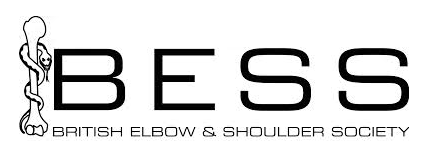“Surgeons will recommend shoulder surgery straight away” is a common fear that prevents many people from seeing a shoulder surgeon. Quite rightly, most people do not want surgery. They are afraid it will be painful and take a long time to recover.
So let me start with some good news – Most shoulder problems do not need shoulder surgery. In my practice, surgery is the last option and will only be offered once we have worked through every other option available.
Not all shoulder pain is the same, and an accurate diagnosis is critical to successful and swift treatment to restore function in your shoulder.
If the pain has just started without any significant trauma or just due to a mild injury, the chances are that the shoulder pain will improve with rest.
If the pain persists, you may need some physiotherapy and simple ‘over-the-counter’ medication to help you get through the acute phase.
There are some scenarios where surgery may be indicated:
- Severe pain not responding to painkillers and rest
- Recent trauma such as a fall or car accident
- Loss of strength and function
- Pain at night-time that prevents you from sleeping
These symptoms warrant further investigation as they may indicate:
- Structural damage within the shoulder
- Inflammatory process
- Osteoarthritis
- Underlying bone problem
If you are unsure, the safest thing to do is to come and see me. I can examine you, organise any X-rays or an MRI to confirm the diagnosis and start a treatment plan within a couple of days.
Where to start?
Firstly, before recommending shoulder surgery for you, I need to work out the cause of your shoulder pain. Pain in the shoulder isn’t necessarily caused by a problem in the shoulder joint but by a problem in another area such as the neck. Irritable joints or a disc prolapse in the neck may be experienced as pain in the upper arm, shoulder and back.
You may be surprised to learn that tightness in your hip flexors or weakness in the gluteal muscles (the muscles you sit on) can also cause shoulder pain.
One of the most common triggers for shoulder pain is poor posture. Modern living often results in a hunched-over upper back and shoulders that droop forwards. This is priming your body for shoulder problems. Retraining your posture so that you stand up straight is all that is required to resolve this issue.
As a surgeon, It is essential to take a ‘whole-body’ approach when looking at causes of shoulder pain as this can avoid the need for unnecessary surgery.
Non-operative treatment for shoulder pain
There are things you can do to treat shoulder pain yourself. This includes:
- Painkillers such as paracetamol or ibuprofen
- Ice packs to reduce pain and swelling
- Avoid activities that aggravate your symptoms will also help
Physiotherapy is excellent for releasing tight muscles and strengthening weak muscles to improve posture and shoulder function.
Injection therapy for shoulder pain
If the pain is still persistent, the next level up is injection therapy. The injection site depends on the cause of your pain. Three anatomically different areas in the shoulder may be injected;
- The glenohumeral joint, which is the main shoulder joint
- The acromioclavicular joint, which is a small joint at the top of your shoulder
- The bursa – the most common
It is essential to be accurate when injecting the shoulder. I send patients to a consultant radiologist who will infiltrate the shoulder using an ultrasound machine so that the needle can be inserted accurately under direct vision before the drug is administered.
If you have bursitis, you may have pain as you lift your arm out to the side or round to your back. A local anaesthetic and anti-inflammatory corticosteroid injection into the bursa are usually very effective.
If you have a problem in your acromioclavicular joint, you may experience a sharp pain related to specific movements. A local anaesthetic and anti-inflammatory corticosteroid injection into the acromioclavicular joint are usually very effective.
A frozen shoulder is a severely painful condition, particularly at night-time. An injection of local anaesthetic, an anti-inflammatory corticosteroid, and saline (salt-water) are used to treat this. This is called hydrodilatation, as the saline gently stretches the shoulder lining, helping to free up the restrictions within the glenohumeral joint. The local anaesthetic means the process is comfortable, and the steroid helps combat both inflammation and pain.
Many patients say to me that the effects of the hydrodilatation are miraculous and can get rid of the pain within days. Some people require a second injection to improve the movement of the shoulder. Rarely, for some patients, the restriction in the shoulder is still problematic after the second injection, and then they may wish to consider surgery.
I do not recommend repeated injections of corticosteroids into the shoulder joint or the as this may cause damage to the tendons that attach to the muscles that move the shoulder joint.
Arthritis within the primary shoulder joint can be very painful and restrict movement. This condition can be painful at night-time and wake you up. In this condition, the cartilage, a smooth white, slightly spongy tissue, becomes damaged and breaks up. Once the cartilage is gone, it cannot be repaired or replaced. In some patients, an injection of hyaluronic acid has helped alleviate the pain in the short term. Hyaluronic acid is a naturally occurring molecule found within cartilage. It comes as an oily fluid, and I describe it as WD40 for your joints. Synvisc and Durolane are different preparations of hyaluronic acid. If the cartilage in your shoulder joint has been lost, in the long term, surgery is the only option at this stage to stop the pain.
Which shoulder conditions need treatment with surgery?
If non-surgical treatments haven’t worked to relieve your pain and restore movement, sometimes it’s necessary to treat shoulder pain with minimally invasive surgery. There are several types of surgery depending on what is causing the pain:
SURGICAL TREATMENT for FROZEN SHOULDER
Arthroscopic capsular release – This is keyhole surgery and can usually be done as a day case.
A camera is placed inside the shoulder, and under direct vision, a radio frequency probe is used to heat up and dissolve the contracted shoulder capsule. Bands of scar tissue melt away quickly. The arm is then carefully moved throughout its entire range to check that the release has been sufficient. You will need physiotherapy after the surgery to help you regain a full range of motion.
Please read my complete information on Frozen Shoulder Causes and Treatment.
SHOULDER IMPINGEMENT SURGERY
Subacromial bursitis is one of the most common conditions I treat, and I will always try to exhaust all non-operative options first. Sometimes, despite excellent therapy, we may need to consider surgery. This is usually a quick day-case procedure with a light general anaesthetic and a regional nerve block. I make two small incisions to place a small camera and shaver inside your shoulder. The goal of the surgery is to shave away the bursa and any bony spurs on the undersurface of the acromion, which is part of the shoulder blade.
Before you return home, you’ll be given some painkillers for the next few days, and I’ll show you how to perform some gentle exercises to get the shoulder moving. Physiotherapy is best started 10-14 days post-surgery, giving the wounds time to heal.
Please read my complete information on Shoulder Impingement Syndrome Treatment.
SURGERY OPTIONS FOR ROTATOR CUFF TEARS
If you have torn one of the rotator cuff muscles that attach to your shoulder, it is essential to scan the shoulder urgently to see how big the tear is and determine whether it can be repaired. The rotator cuff muscles move your arm, and if they are torn, everyday activities can become painful and restricted. MRI scans and ultrasound scans help to assess the tear. If you are active, I recommend that you have surgery to bring the tendon back to the bone. The tendon is like an elastic band, and once it is wholly torn, it will not heal back spontaneously.
Surgery is usually a day-case with a light general anaesthetic. A regional nerve block is used so that you do not wake up from surgery in pain.
Usually, the cuff repair can be carried out through small incisions made around the shoulder (known as arthroscopic or keyhole surgery). If it is a massive tear, it may be necessary to make a bigger incision to get full access to the shoulder.
When you leave the hospital, your arm will be in a sling across your body to protect the surgical repair. You’ll be given some initial exercises to help prevent stiffness. You will then work with your physiotherapist later to increase the range of movement and strengthen the shoulder.
Please read my complete information on Rotator Cuff Tear Pain.
SHOULDER DISLOCATION SURGERY
If your shoulder often dislocates, you may need surgery to stop it from happening again. Surgery will also prevent the surrounding tissues and nerves from becoming damaged. Shoulder stabilisation surgery is usually a day case operation. You’ll typically go home at the end of the day, or if your surgery happens in the afternoon, you might have an overnight stay.
Depending on the type of instability you have, there are two ways to stabilise the shoulder; if only the soft tissues have been torn, the repair can be done through small incisions made around the shoulder, known as arthroscopic or keyhole surgery. Small suture anchors are placed in the bony socket, and stitches are placed around the torn socket (labrum) to bring it back to the bone and secure it.
If there is damage to the bone of either the socket or the humeral head, a more extensive incision will be needed to get full access to the shoulder. A small piece of bone will be taken from another part of the shoulder blade (coracoid process) and will be placed on the front of the socket (glenoid) and held securely in place with metal screws.
When you leave the hospital, your arm will be in a sling across your body to protect the surgical repair. You’ll be given some initial exercises to help prevent stiffness and then start further physiotherapy at around five weeks to increase the range of movement and strengthen the shoulder.
Please read my complete information on Dislocation Shoulder Causes and Treatment.
AC JOINT DISLOCATION SURGERY
The acromioclavicular joint is a small joint between the clavicle (collarbone) and the scapula (shoulder blade). As with all injuries, there is a range of how badly you can disrupt your AC joint. Amongst orthopaedic surgeons, we categorise the different injuries into grades based on the amount of damage to the ligaments, from Grade I being mild to Grade V, the most severe.
For AC joint dislocation Grades I and II, the ligaments and the capsule that stabilise the joint are stretched or sprained. Generally speaking, the joint remains stable, and surgery is not needed.
If you have a grade IV, V or VI injury, surgery is recommended to restore and stabilise the AC Joint.
I use a small incision to expose the clavicle and then use an Arthrex “dog bone”, two titanium buttons placed on top of the clavicle and under the coracoid process (part of the scapula bone) with suspension tapes tied securely between the two to bring the clavicle back to its place.
After the surgery, your shoulder will need to be supported by a sling for three weeks, and you’ll be seen by a physiotherapist to prevent stiffness. Rehab to restore your shoulder’s range of movement and strength is important (so do those exercises!), but the good news is that most patients have an excellent outcome after surgery.
Please read my complete information on AC Joint Dislocation Treatment.
COLLARBONE FRACTURE SURGERY
Most collarbone injuries tend to occur in the middle third of the collarbone, and if the bone ends are in good alignment, the collarbone is 85 % likely to heal without needing surgery. There are few instances when surgery may be the better option. These include if the fracture ends have displaced, or the bone has penetrated through the skin.
The surgery is usually a day case procedure with a light general anaesthetic. During the operation, I will make an incision over the clavicle and bring the broken ends back together into good alignment. This is then secured using a thin metal plate and screws.
After ten days, I will review you in the clinic to remove the dressings and then again at six weeks. X-rays will be taken to ensure the fracture is healing well and that the alignment is excellent. Physiotherapy will be needed to get you back to moving well.
Please read my complete information on Clavicle Bone Fractures.









